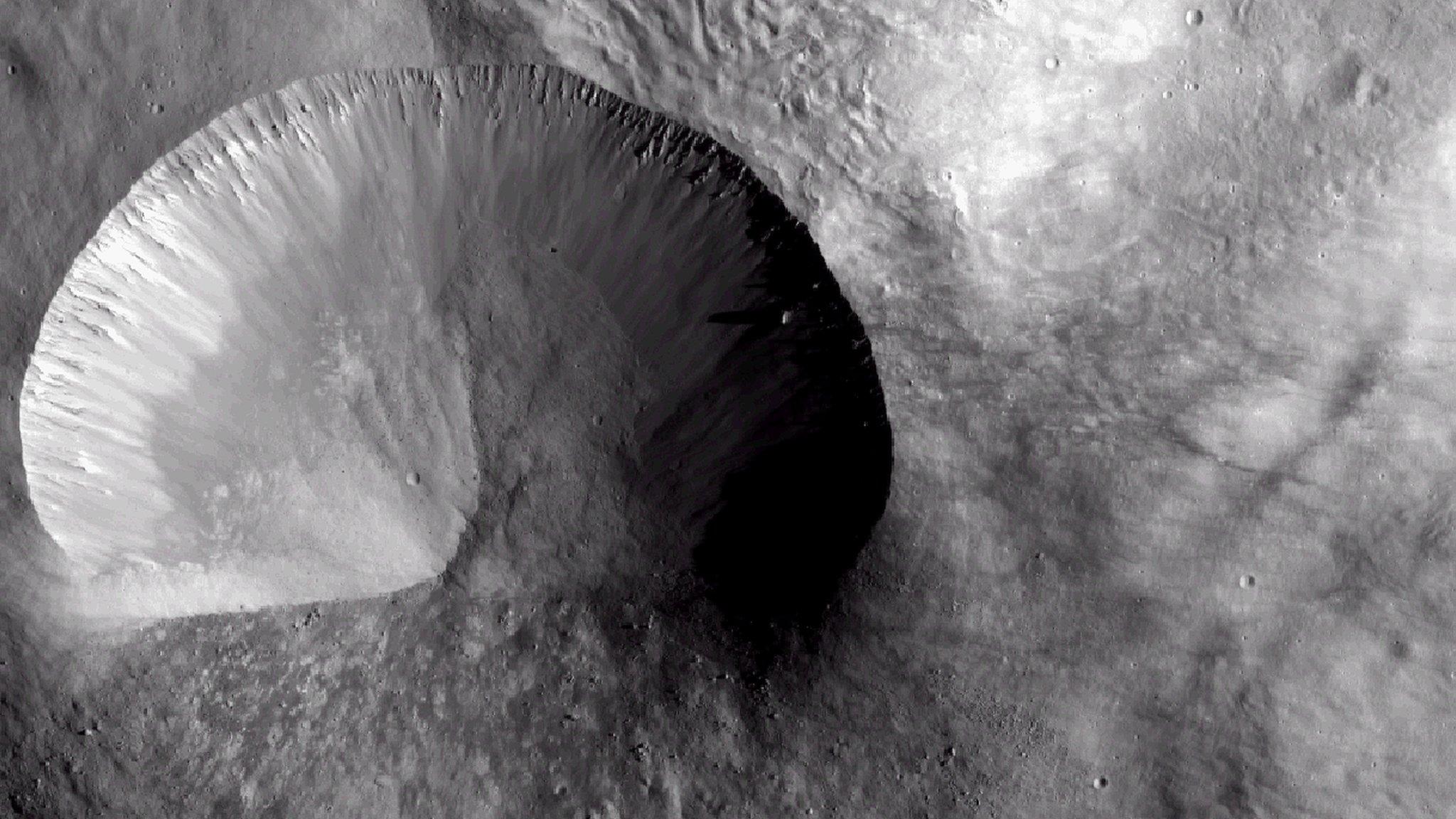Bright spotlight on Dawn mission to Ceres
- Published
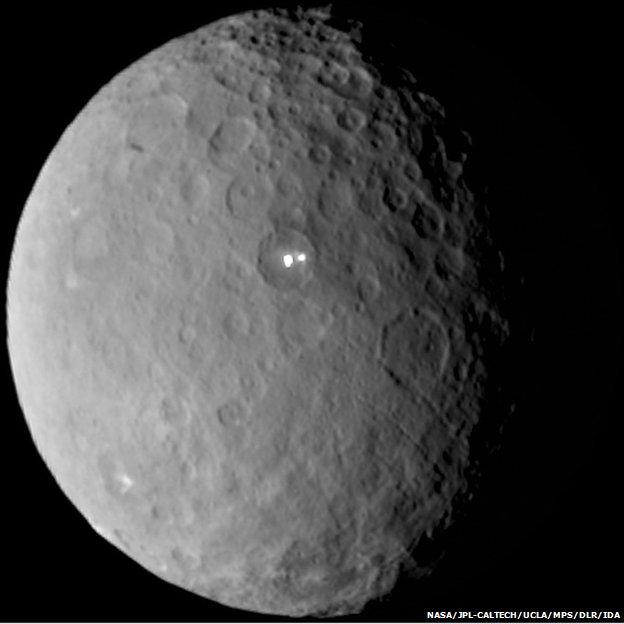
The bright spots inside a 92km-wide crater have been the big surprise of the encounter so far
Scientists say they are hugely excited to learn the origin of two bright spots on the surface of Ceres.
The US space agency's Dawn probe is bearing down on the dwarf planet and on Friday will be captured by its gravity.
That will allow the satellite to spiral down in altitude in the coming months, to take ever sharper images of the spots, which sit inside a wide crater.
The striking features could be where an impact has dug out surface deposits and exposed the dwarf's interior layers.
But deputy project scientist Dr Carol Raymond cautioned that the resolution of Dawn's imagery was not good enough at the moment to make any definitive statements.
"These spots were extremely surprising and they have been puzzling to everyone who has seen them," the Nasa Jet Propulsion Laboratory researcher told reporters.
"They show up in a 92km-wide crater that's about 19 degrees North latitude. The spot in the centre is about twice as bright as the spot on the side of the crater, and as yet it has not been resolved, meaning it is smaller than the 4km pixel size [of the images].
"But its apparent brightness is already off-scale; it's consistent with high reflective materials."
Intriguingly, the European Space Agency's Herschel telescope reported last year seeing water vapour coming from two sectors on Ceres. One of these sectors includes the location of the spots. That could be very significant, Dr Raymond said.
"The association with the impact crater may indicate that impact heating resulted in exposure of underlying ice [and] its vaporisation; and perhaps we're seeing a deposit left behind which is rich in material like salts."
Dawn will spend 14 months studying the 950km-diameter dwarf planet, which is the largest object in the asteroid belt between Mars and Jupiter.
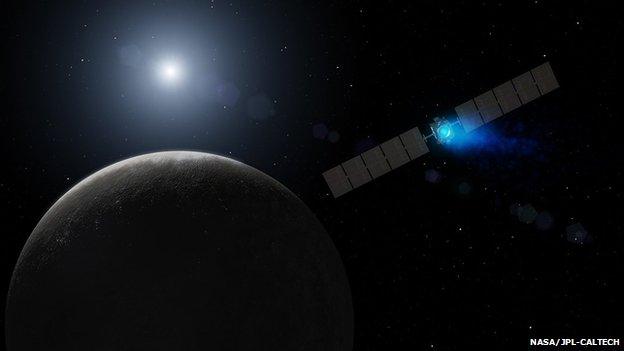
An artist's impression of Dawn firing its ion engine on approach to Ceres
The satellite has turned up at Ceres having previously visited the asteroid Vesta. This 530km-wide rock had the look of a punctured football, the result of a colossal collision sometime in its past that ripped a big chunk out of its southern polar region.
Ceres, on the other hand, is big enough for gravity to have pulled it into a more spherical shape.
Scientists think both bodies are fledglings that never quite made it to the planetary big time.
In the case of Vesta, it underwent a lot of the same processes that transformed the early Earth, such as differentiating its insides to include an iron core.
In contrast, Ceres's bid to reach the major planet league probably stalled quite quickly.
Researchers believe its interior is dominated by a rocky core topped by ice that is then insulated by rocky lag deposits at the surface.
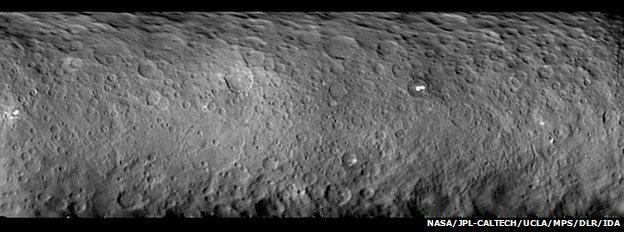
The surface of Ceres is covered with craters of many shapes and sizes
A big question the mission hopes to answer is whether there is a liquid ocean of water at depth. Some models suggest there could well be.
The evidence may well be found in Ceres' craters which have a very muted look about them. That is, the soft interior of the dwarf has undoubtedly had the effect of relaxing their original hard outline.
"One of the prime motivations of the Dawn mission is to examine these building blocks of the planets, Vesta and Ceres, which are two intact proto-planets from the very dawn of the Solar System. They're literally fossils that we can investigate to really understand the processes that were going on at that time," Dr Raymond said.
At capture, the satellite will be at a separation of about 40,000km. Controllers at Earth will work in the next few weeks to reshape the orbit to get it ready for science.
One issue is that Dawn approached the dwarf from its Sun-lit side. The probe has now gone over to the dark side, and it will not come back around again to take images until late April.
But then onwards, the pictures will just get better and better as the orbit is progressively lowered.
"We'll get to our final orbit in December of this year at just [380km] from the surface, which for context is just a little bit lower than the International Space Station orbits around the Earth. From this vantage point, Dawn will acquire its highest detail and highest resolution images of the surface," said Nasa project manager Robert Mase.
Discovered in 1801 by the Sicilian astronomer Father Giuseppe Piazzi, Ceres is named after the Roman goddess of agriculture and harvests.
Craters on Ceres will follow a similar theme and will be named after gods and goddesses of agriculture and vegetation from mythology. Other features on the dwarf will be named after agricultural festivals.
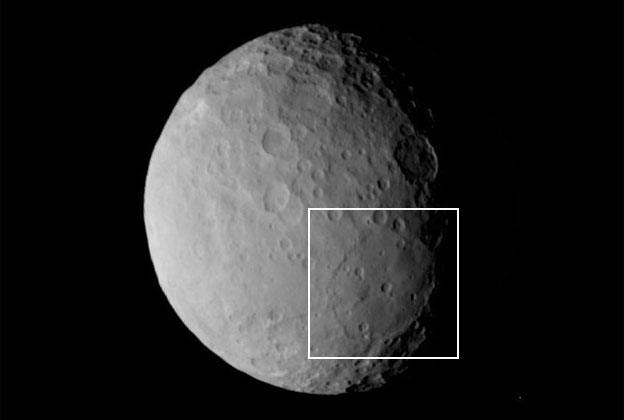
The soft outline of the big basin suggests that the surface has relaxed over time
Jonathan.Amos-INTERNET@bbc.co.uk and follow me on Twitter: @BBCAmos, external
- Published27 January 2015
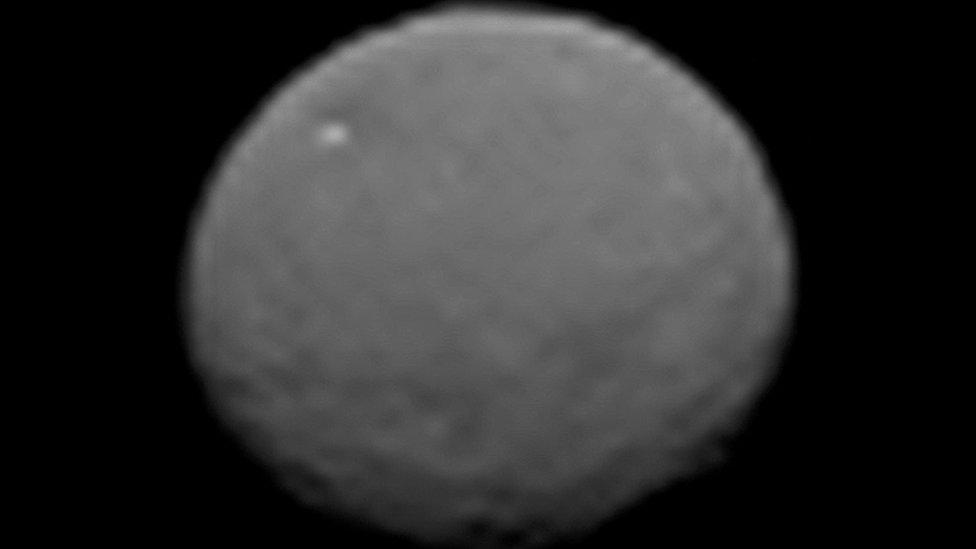
- Published19 January 2015
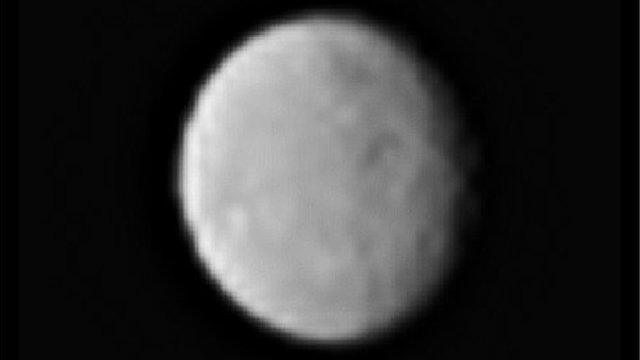
- Published9 January 2015
- Published6 September 2012
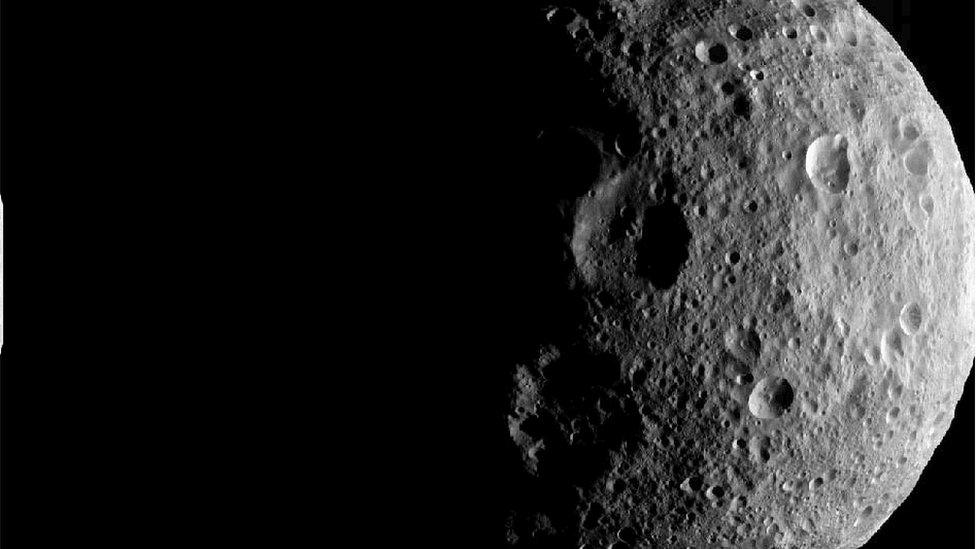
- Published11 May 2012
